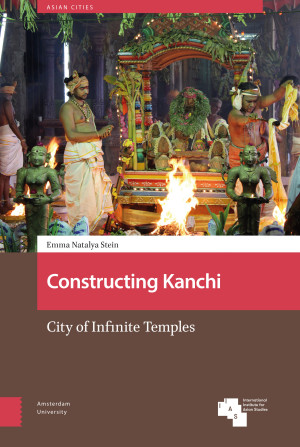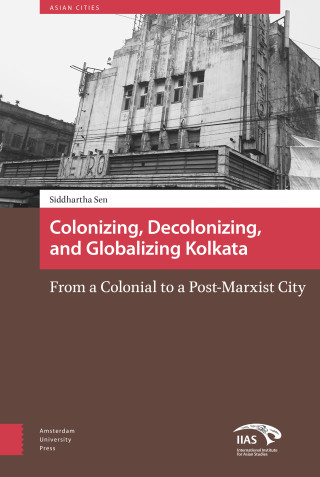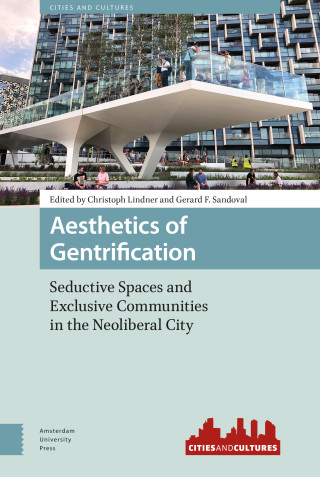

- Title
- Constructing Kanchi
- Subtitle
- City of Infinite Temples
- Author
- Emma Natalya Stein
- Price
- € 129,00 excl. VAT
- ISBN
- 9789463729123
- Format
- Hardback
- Number of pages
- 300
- Language
- English
- Publication date
- 26 - 10 - 2021
- Dimensions
- 15.6 x 23.4 cm
- Series
- Asian Cities
- Partner

- Categories
- Art and Material Cultures
- Heritage and Memory Studies
- Religion and Theology
- South Asia
- Urban Cultures
- Discipline
- Asian Studies
- Preview
- Download Preview
- Also available as
- eBook PDF - € 128,99
Acknowledgements
List of Illustrations
Note on Transliteration, Translation, and Illustrations
Introduction: All Streets Lead to Temples
An Ancient City
Layers of Time
Kanchi Known and Unknown
1 Sandstone and the City: Building Pallava-Kanchi (ca. seventh through ninth century)
From Brick to Stone (the Seventh Century)
Sandstone Temples in the City (the Eighth Century)
The Temples of Pallava-Kanchi
Everywhere but Kanchi (the Ninth Century)
Conclusion: Foundations Laid
2 Realignment: Kanchi in the Chola Era (ca. tenth through thirteenth century)
Orienting the Gods
Pilgrimage and Processions
From Ancient Village to Temple Town
Local Style
Conclusion: Urban Logic
3 The City and its Ports
Part 1: K.ETRA
The River Networks
Over the Hills
The Coast
Part II: K.ATRA
Kanchi in a Buddhist World
The City and its Mirrors
Conclusion: From Kanchi to the Sea
4 Kanchi Under Colonialism: What Happened in Kanchi while those Towering Gateways Arose?
Embattled Territory
William Daniell’s Most Considerable Temple
James Wathen’s Soaring View
Henrietta Clive’s 'Hindoo Gods and Monsters'
Colonel Colin Mackenzie’s Search for the Jains
Surgeon George Russell Dartnell
James Fergusson's Downward Spiral
Prince Alexis Soltykoff's 'City of Infinite Temples'
Conclusion: Plastered Pasts
Epilogue: The Living Temple
Encounter
Expansion
Continuation
Bibliography
Index
List of Illustrations
Note on Transliteration, Translation, and Illustrations
Introduction: All Streets Lead to Temples
An Ancient City
Layers of Time
Kanchi Known and Unknown
1 Sandstone and the City: Building Pallava-Kanchi (ca. seventh through ninth century)
From Brick to Stone (the Seventh Century)
Sandstone Temples in the City (the Eighth Century)
The Temples of Pallava-Kanchi
Everywhere but Kanchi (the Ninth Century)
Conclusion: Foundations Laid
2 Realignment: Kanchi in the Chola Era (ca. tenth through thirteenth century)
Orienting the Gods
Pilgrimage and Processions
From Ancient Village to Temple Town
Local Style
Conclusion: Urban Logic
3 The City and its Ports
Part 1: K.ETRA
The River Networks
Over the Hills
The Coast
Part II: K.ATRA
Kanchi in a Buddhist World
The City and its Mirrors
Conclusion: From Kanchi to the Sea
4 Kanchi Under Colonialism: What Happened in Kanchi while those Towering Gateways Arose?
Embattled Territory
William Daniell’s Most Considerable Temple
James Wathen’s Soaring View
Henrietta Clive’s 'Hindoo Gods and Monsters'
Colonel Colin Mackenzie’s Search for the Jains
Surgeon George Russell Dartnell
James Fergusson's Downward Spiral
Prince Alexis Soltykoff's 'City of Infinite Temples'
Conclusion: Plastered Pasts
Epilogue: The Living Temple
Encounter
Expansion
Continuation
Bibliography
Index
Emma Natalya Stein
Constructing Kanchi
City of Infinite Temples
Constructing Kanchi: City of Infinite Temples traces the emergence of the South Indian city of Kanchi as a major royal capital and multireligious pilgrimage destination during the era of the Pallava and Chola dynasties (ca. seventh through thirteenth centuries). The book presents the first-ever comprehensive picture of historical Kanchi, locating the city and its more than 100 spectacular Hindu temples at the heart of commercial and artistic exchange that spanned India, Southeast Asia, and China. The author demonstrates that Kanchi was structured with a hidden urban plan, which determined the placement and orientation of temples around a central thoroughfare that was also a burgeoning pilgrimage route. Moving outwards from the city, she shows how the transportation networks, river systems, residential enclaves, and agrarian estates all contributed to the vibrancy of Kanchi’s temple life. The construction and ongoing renovation of temples in and around the city, she concludes, has enabled Kanchi to thrive continuously from at least the eighth century, through the colonial period, and up until the present.
Author
Emma Natalya Stein
Emma Natalya Stein (PhD, Yale) is Assistant Curator of South and Southeast Asian Art at the Freer Gallery of Art and Arthur M. Sackler Gallery, the Smithsonian's National Museum of Asian Art. Her research investigates the relationships among sacred architecture, urban space, and tropical landscapes. Dr. Stein has conducted fieldwork throughout South and Southeast Asia.




